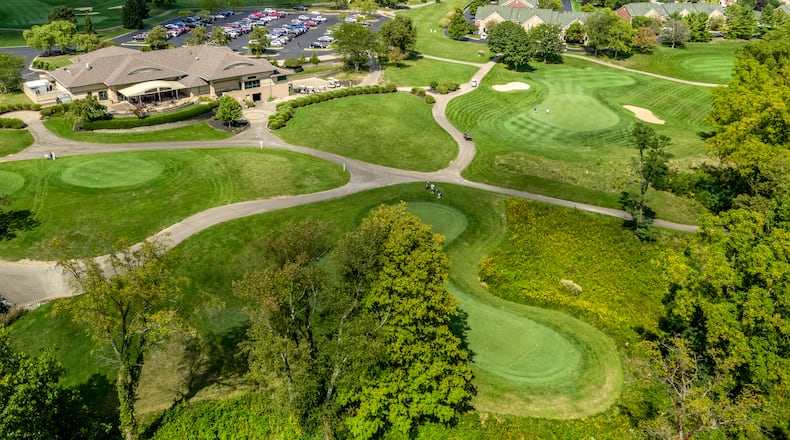Specifically, the proposal involved changing the designation from a “non-disturbance area” to a “no-cut zone.”
In reviewing the regulations, the city found that there is a difference between how “buffers” are defined in approval of the Amberwood subdivision - located along New Germany-Trebein Road - versus surrounding subdivisions.
As it stands, nearby Woodlands of Canterbury Trails and Bent Creek West have “no-cut zones” (essentially meaning residents are only prohibited from cutting down trees). However, Amberwood and Bent Creek East have “non-disturbance zones,” which are much more strict.
The family who owns the property in question built a retaining wall and patio behind their home, though were told by the contractor that they were told they did not need a permit for that construction, they told city council.
While the work is “extensive and very attractive,” city staff say, the issue lies in balancing their hard work - and money spent - with existing regulations.
City council members discussed the issue at length Monday, ultimately deciding that a full reclassification would constitute a major modification, requiring review by the planning commission, as well as public participation.
The city council voted 3-2 to send the issue back to the city’s planning commission as a major modification. Mayor Don Adams, and council members Tiffany Schwartz and David Litteral voted in favor, and members Charles Curran and Joanna Garcia dissented. Councilman Glenn Duerr was absent, and Vice-Mayor Pete Bales was recused.
A new proposal will be presented to council on July 14, which would preserve the existing buffer while introducing an additional condition permitting limited encroachment for the construction of patios and decks. While specific details are still being finalized, the city views this approach as a balanced solution, as it avoids the need for a major modification, requiring only a minor modification to be reviewed by the Planning Commission, the city said.
Schwartz, who proposed the major modification route, advocated for public discussion of the issue.
“I would like to hear the input of the citizens that are going to be impacted by this change on both sides,” she said. “What do they want their neighborhood to look like?”
Bales recused himself from the discussion and vote, though spoke as a resident to city council on the subject.
The city’s planning commission discussed the 25-foot buffer “at length” during the original approval process for the Amberwood neighborhood in 2022, Bales said.
“At face value, it might seem like a very simple adjustment, but in practice, it represents a significant erosion of what city council and planning commission, and our residents were promised just three years ago,” he said. “Now, instead of enforcing the rules we spent months developing, we are being asked to change the rules to accommodate a single violation. That’s not gcood planning.”
The property owner, John Cherry, told city council that the discrepancy between the requirements for his neighborhood and for others near the course was “inconsistent and inequitable,” not only for himself but for his neighbors, adding that the only plants he and his wife removed were invasive and nuisance plants, including honeysuckle and poison ivy, rather than trees.
“This slight modification would still protect the buffer, while allowing more beautiful and practical enforcement management standards. The request is in keeping with other single family residential developments adjacent to the golf course,” he said.
About the Author

